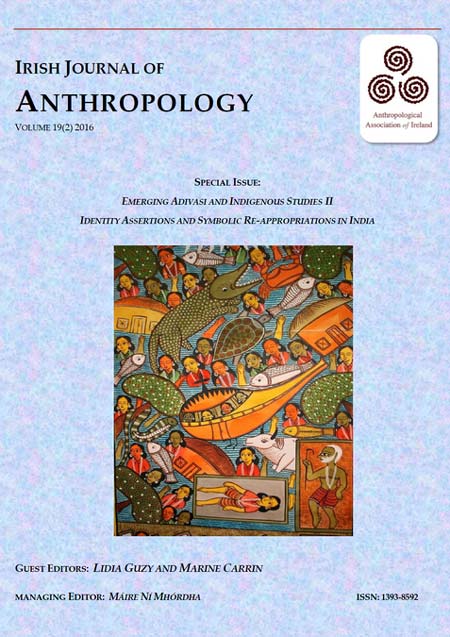To read or download the full issue, click here >>
Emergence of a new ethnic identity
When the kingdom of Sikkim was integrated into the Indian Union in 1975, the old order was disbanded and Sikkim became a state of the Indian Union. These political changes created the conditions for Limbu identity assertion. Mélanie Vandenhelsken explores the emergence of a separate Limbu identity, distancing itself from ‘Nepaliness’ since the Limbu settlement straddled the border between Nepal and Sikkim. She discusses the part taken by the Sikkimese Limbu in the trans-border Kiranti movement, and shows how Limbu activism developed through literature and script. Then, from the late 1980s, as a response to state policy, the emphasis of Limbu activism moved to rituals and religion. Activists succeeded in reforming ‘Limbu religion’ by referring to the teachings of the ascetic Phalgunanda Lingden (1885–1949), and to redefine their religious practice as ‘Yumaism.’ Later, the writer J. R. Subbha furnished Yumaism with a philosophical base, reminiscent of Christianity and Neo- Hinduism. When the Indian government declared all Sikkim ethnic groups to be Scheduled Tribes in 1994, Limbu religious activity shifted from house and village to community temples which became visible markers of the ethnic community..
Source: Irish Journal of Anthropology, Vol. 19(2) 2016 Autumn/Winter
EDITORIAL NOTE, LIDIA GUZY, MARINE CARRIN, HARALD TAMBS-LYCHE
http://www.anthropologyireland.org/images/2016_2/2016_2_1_Editorial%20Note.pdf
Accessed: 17-12-17

“[A] common perception of conversion, prevalent in India, is that all conversions take place only among deprived lower caste or tribal groups, which are considered more susceptible to allurement or coercion. The reality of upper caste conversions is ignored in this climate of cynicism.”– Dr. Ivy Imogene Hansdak in Pandita Ramabai Saraswati: the convert as ‘heretic’
Tips for using interactive maps
Toggle to normal view (from reader view) should the interactive map not be displayed by your tablet, smartphone or pc browser
For details and hyperlinks click on the rectangular button (left on the map’s header)
Scroll and click on one of the markers for information of special interest
Explore India’s tribal cultural heritage with the help of another interactive map >>
See also
Colonial policies | Freedom Struggle | Independence
Linguistic diversity and multilingualism
Misconceptions | “Casteism” and its effect on tribal communities
Nomadic and Semi-Nomadic Tribes | SEED – Government scheme
Video | Tribes in Transition-III: “Indigenous Cultures in the Digital Era”
